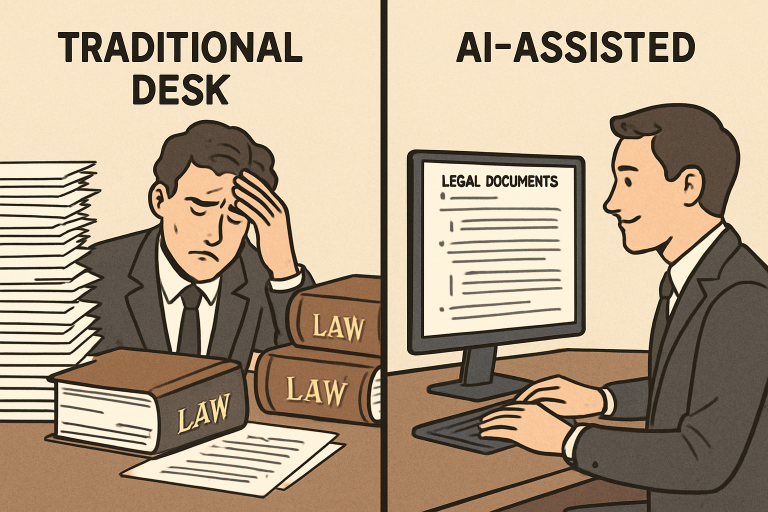Artificial Intelligence (AI) is rapidly revolutionizing workflows and reshaping countless professions, with the legal industry at the forefront of this transformation. One of the most impactful shifts is occurring in the drafting of demand letters—a foundational process for initiating legal claims, disputes, and settlements. Traditionally complex and labor-intensive, the creation of a demand letter is now being streamlined by new technologies, saving time and enhancing the quality of legal documents. With an AI demand letter platform, legal teams are discovering how seamless automation can elevate both accuracy and efficiency.
Demand letters are crucial for initiating legal negotiations and require careful attention and legal expertise to ensure their effectiveness. The integration of AI tools in drafting these documents can streamline the process, resulting in quicker turnarounds and more consistent legal argumentation. AI not only automates repetitive tasks but also allows lawyers to concentrate on strategic analysis and client advocacy. This technological shift enhances operational efficiency, reduces costs, and enables law firms to manage a greater number of cases effectively, thereby establishing a competitive advantage in the legal market.
The Traditional Challenges of Drafting Demand Letters
Drafting demand letters, although crucial, is often hindered by repetitive manual processes. Lawyers must carefully compile, review, and organize case data, medical reports, factual evidence, and legal precedents. This meticulous work ensures that each letter is custom-tailored to a client’s specific circumstances and optimally persuasive.
- Comprehensive review of all relevant records and documentation
- Analysis of case law, statutes, and applicable legal precedents
- Careful construction of legal claims and settlement reasoning
- Ensuring transparent, compliant, and professional formatting
Even minor errors in organization, factual details, or legal citations can undermine the strength of a demand letter, leading to wasted time and missed opportunities for favorable settlements. The repetition and attention to detail required place substantial demands on already-busy legal teams, contributing to rising costs and slower response times for clients.
AI-Driven Solutions in Demand Letter Creation
Modern AI-powered tools directly address these challenges. By automating the extraction of information from legal files, medical records, and correspondence, AI quickly compiles the essential components for effective demand letters. The technology’s natural language processing algorithms can:
- Identify key evidence within lengthy documents
- Draft clear, persuasive, and precise legal arguments
- Automate proper structure, compliance, and formatting
These features free attorneys from tedious manual tasks, enabling them to spend more time on legal strategy and client interaction. Advanced AI platforms can generate a detailed draft in minutes—whereas the same work might take hours or even days otherwise. The influence of these tools is felt not only in solo practices but also among larger firms seeking scalable solutions for document-heavy litigation.
Enhancing Accuracy and Consistency
A chief benefit of AI-assisted drafting is its ability to enforce a higher standard of accuracy and consistency across documents. Rather than relying on memory or experience to recall relevant case law, AI continuously references up-to-date legal databases, formatting protocols, and previous outcomes to support rigorous, compelling arguments. Automated cross-referencing ensures that every claim is well-supported and every precedent is cited correctly, dramatically reducing the risk of error or oversight.
Cost Reduction and Efficiency Gains
The return on investment for firms integrating AI into demand letter drafting is clear. Automation reduces the labor hours involved, slashes operational costs, and empowers lawyers to handle a higher volume of cases. This not only boosts firm profitability but also allows legal professionals to deliver better results for more clients without sacrificing detail or precision. In a landscape where clients increasingly demand value and transparency from legal providers, these efficiency gains offer a decisive competitive advantage.
Ethical Considerations and AI Integration
Despite its apparent benefits, the adoption of AI is not without its ethical considerations. Lawyers must ensure that sensitive client data remains confidential and that AI-generated content complies with professional standards. Human oversight remains critical: reviewing and approving drafts not only safeguards the accuracy and appropriateness of the documents but also maintains the trust and accountability that are hallmarks of legal service.
Future Prospects of AI in Legal Practice
As AI continues to evolve, its applications in law will also evolve. Future innovations may include predictive analytics for settlement potential, real-time legal research, and advanced discovery tools for complex litigation. These advances promise to democratize access to quality legal resources further, while also elevating the service clients expect from their attorneys. The legal sector, by embracing these tools, stands ready to undergo a fundamental transformation in response to client needs and marketplace demands.
Conclusion
The use of AI in drafting demand letters marks a pivotal moment for the legal industry. Law firms that adopt AI solutions enjoy improved speed, precision, and cost savings, while also offering clients a higher standard of service. As the field continues to evolve, lawyers who leverage these tools will not only gain a competitive edge but also help set a new standard for justice and efficiency in legal practice.
